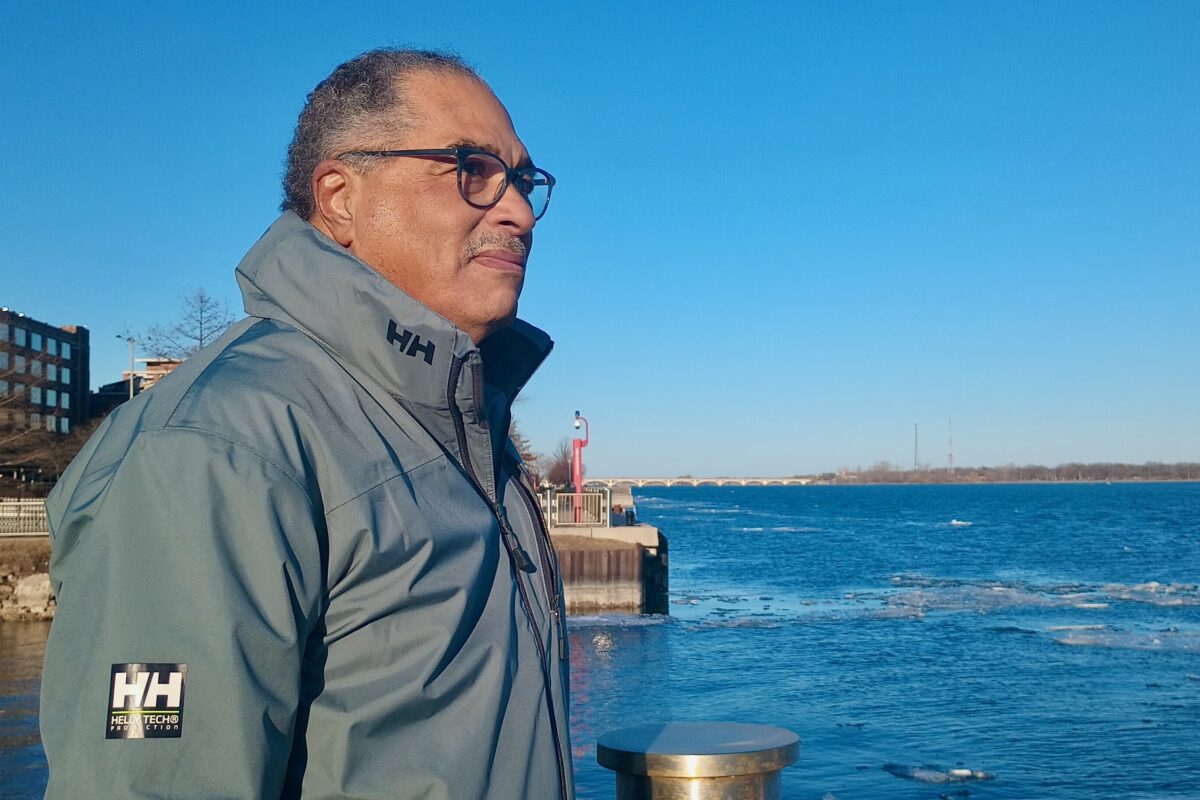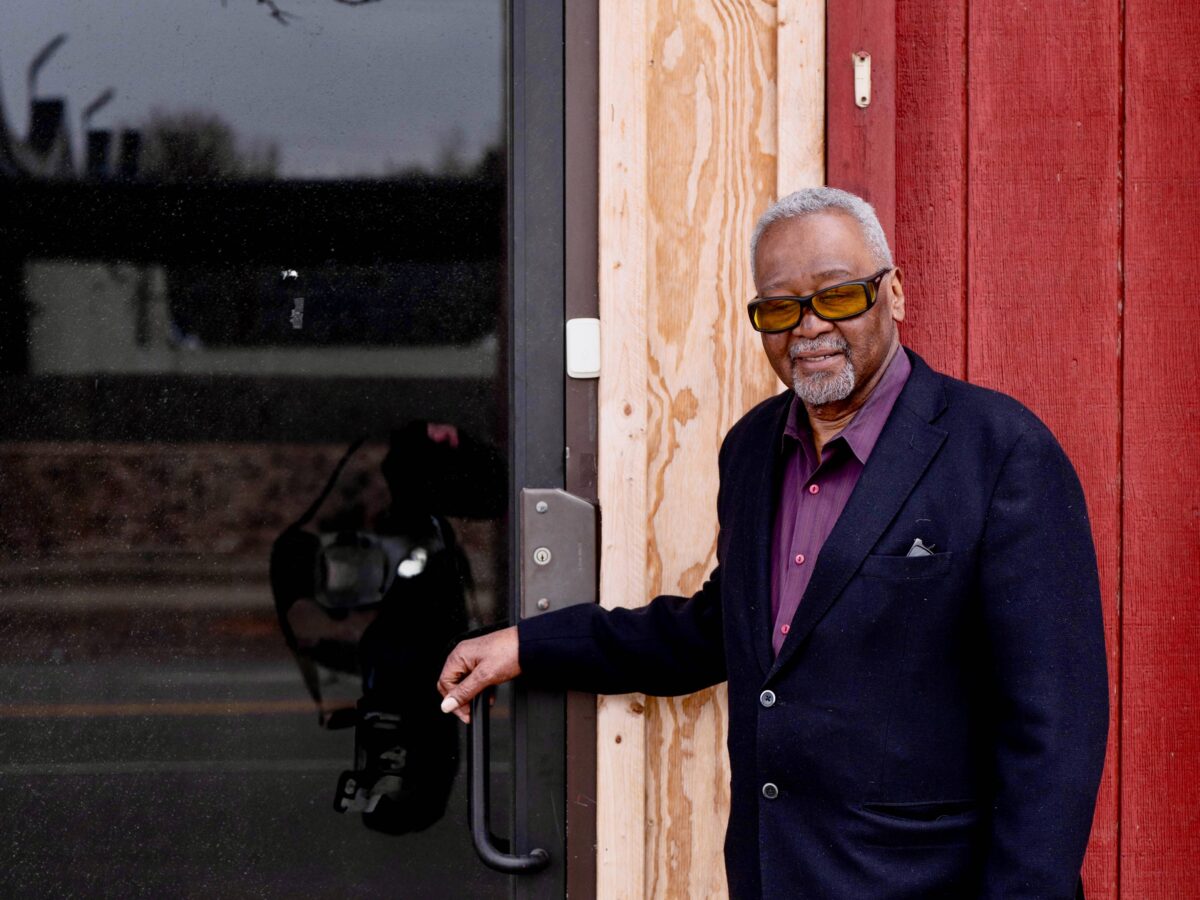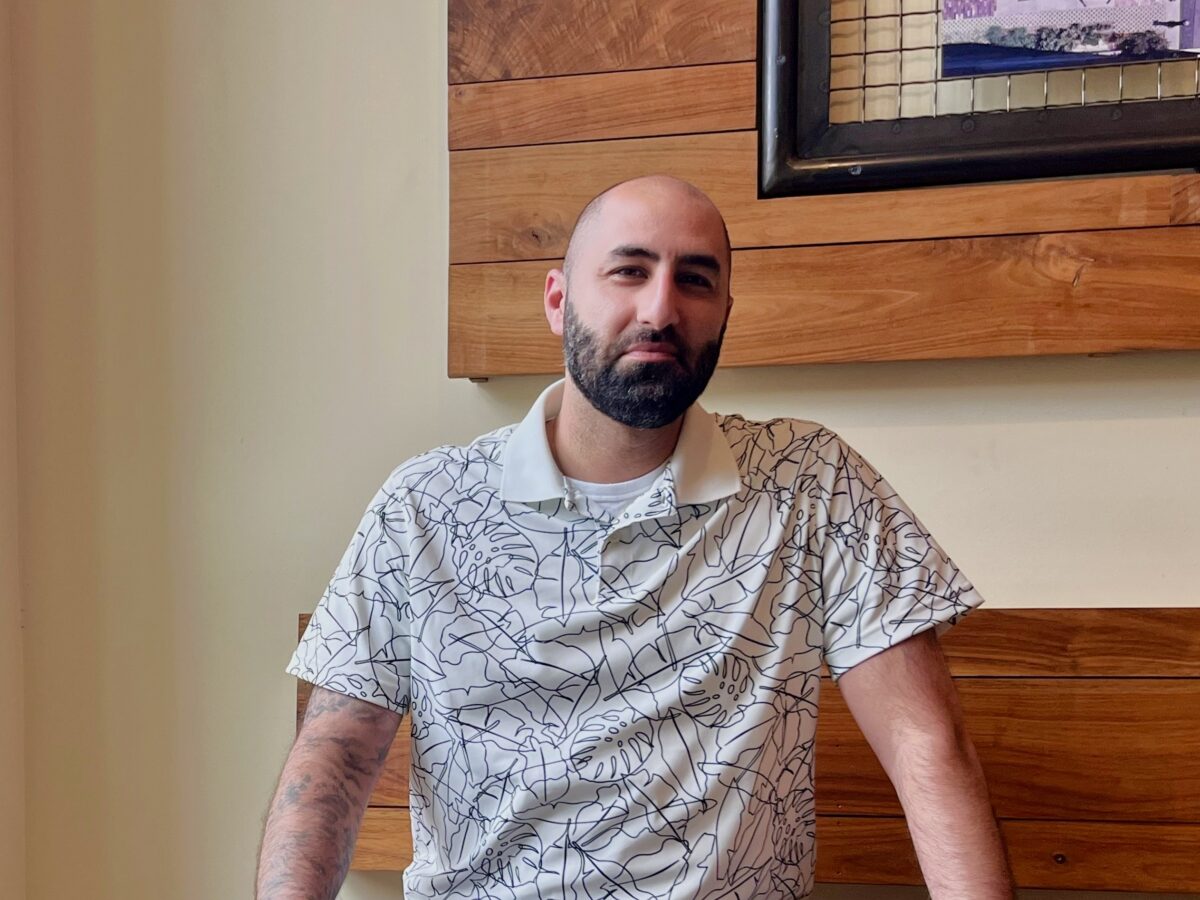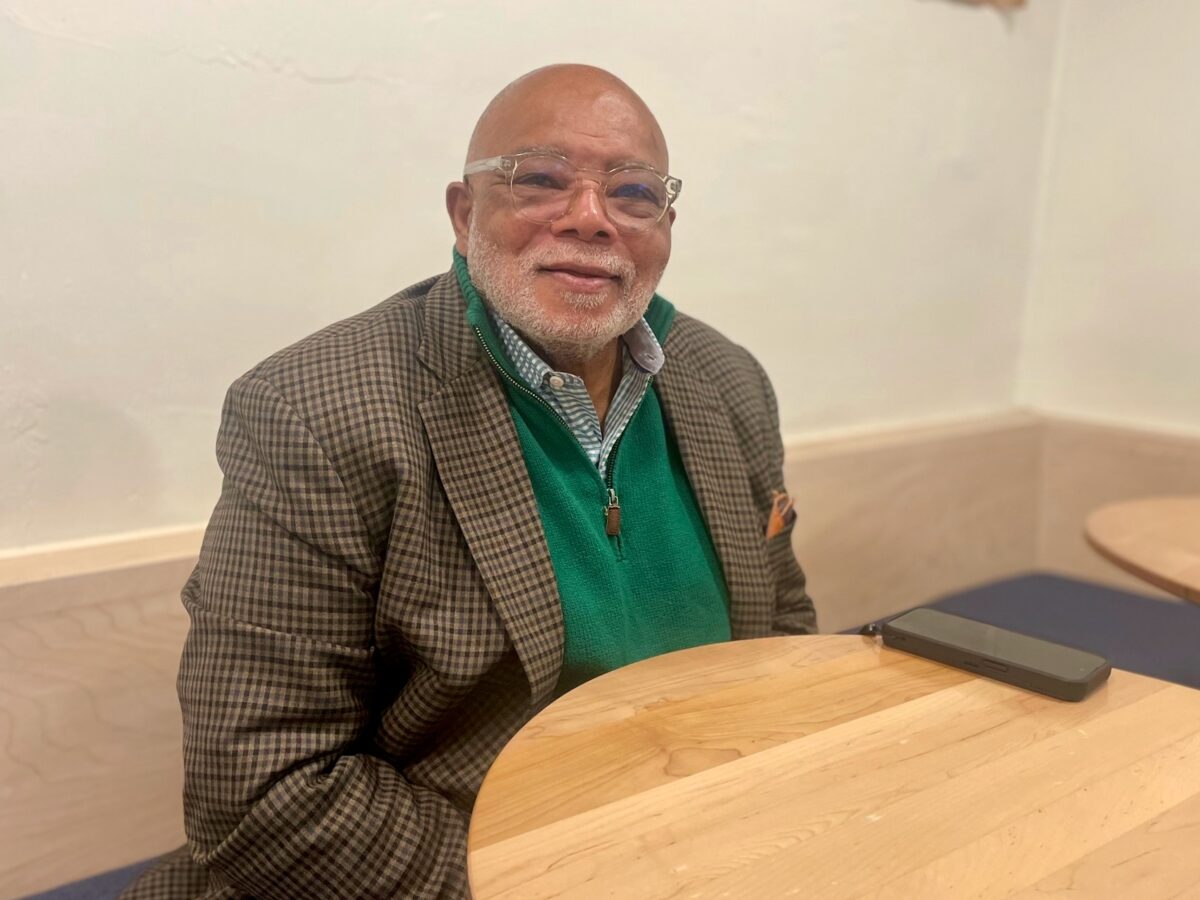Overview:
-The Detroit Community Sailing Center offers lessons to youth and adults and aims to make the river accessible.
-Harry Jones, the center's president, started sailing as a young man in Cincinnati.
-“The Detroit River is really the best place to learn how to sail," he says.
This story is published as part of Planet Detroit’s 2025 Spring Neighborhood Reporting Lab, supported by The Kresge Foundation, to train community-based writers in profile writing. This year’s participants will focus on highlighting grassroots leaders driving positive change in metro Detroit.
As warmer weather reaches the Detroit River, you are guaranteed to find the president of Detroit Community Sailing Center, Harry Jones, near the historic Belle Isle Boathouse.
At that beginning stage of the city’s sailing season, you might catch him either setting up the organization’s floating dock, repairing one of their many boats, or perhaps cruising along the river on a Flying Scot.
If you visit in June, it is likely to find the athletic retiree rigging an “Opti” — Optimist dinghy — with youth sailors by day or on the water in the evenings, instructing adult groups in the safe zone of the waters around Belle Isle.
“The Detroit River is really the best place to learn how to sail,” said Jones. “Especially in the bay that’s formed by the [Belle Isle] bridge on the north shore.” The light traffic and calm wake offer ideal conditions for beginners of all ages, he said.
MORE FROM THE NEIGHBORHOOD REPORTING LAB
How Detroit Impact’s ‘fatherlike figure’ Calvin Colbert shapes young lives
Calvin Colbert has dedicated nearly three decades to managing the Detroit Impact youth center, empowering low-income families and at-risk youth through education and mentorship. “I’m blessed every day to get up and to be able to come here and function,” he says.
Andrew Bashi’s legal journey: ‘Working on the issues I care about’
At the Great Lakes Environmental Law Center, Andrew Bashi tackles civil rights cases while empowering residents to organize and advocate for their needs. He advises aspiring attorneys to brace for challenges and engage in activism even before law school.
Detroiter’s activism around I-375 project starts with appreciation for Black Bottom history
Carl Bentley and the ReThink I-375 Coalition question the environmental impact, community involvement, and economic outcomes of Detroit’s $300 million I-375 revamp, and advocate for genuine community partnership in the project.
‘Water is in my DNA’
The Detroit Community Sailing Center was founded in 1994 with the mission of making Detroit’s waterfront and sailing accessible to those who otherwise may not get the opportunity. Last year, DCSC had close to 80 Black youth members in addition to its growing number of adult learners, Jones said.
Since getting involved with DCSC in 2011 and taking helm of the nonprofit, Jones has helped the organization achieve some major milestones.
With a background in education, career in human resources at Ford Motor Co., and a passion for introducing sailing to more Detroit youth, Jones adopted a 10-year growth plan for the nonprofit that allowed it to go from two sailboats and eight participants to 26 sailboats and a capacity for 80 participants.
Jones first learned how to sail in the Cincinnati area, where he’s from, as a young man in the 1970s. The small inland lakes in the region offered very scarce wind. The wooded, hilly nature of the southern Ohio region is to blame, he said. With such little wind available, a sailboat’s speed and maneuverability was more work than it was worth most days, according to Jones.
Those wind conditions led to several “pre-tornado trips” for Jones, which he said seemed to be the only time there was enough wind to sail. Jones and his crew would often pitchpole, which is when a sailboat completely flips over due to its mast tipping forward.
‘We’d be out there before a storm and [my 16-foot Hobie Catamaran] would hike up on one hull or the other. And we turned it over quite a bit there, all the way! We went turtle.”
Jones said he never let those “turtling” days stop him from learning how to sail. After turning his sailboat over numerous times and ways, he said “the adrenaline rush” got him “hooked” on the sport.
Today he attributes that “lack of stability” in Midwestern storms as helpful training for him to navigate his own trips on the Atlantic Ocean, in Chesapeake Bay, offshore in the Caribbean, and along the Eastern Seaboard.
“Water is in my DNA,” Jones said with a smile.
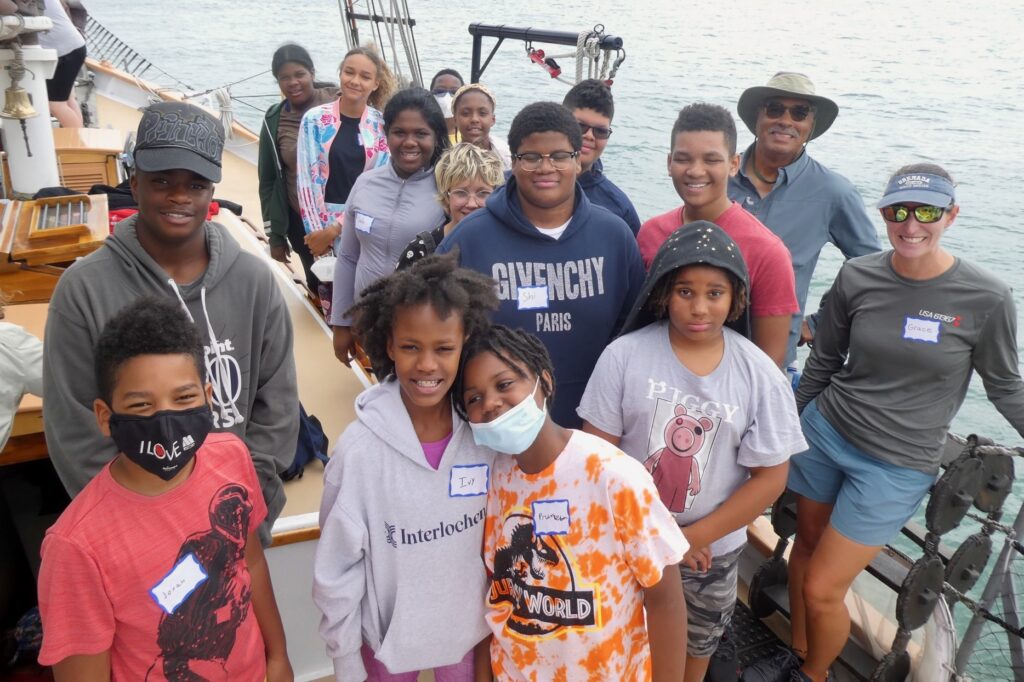
Detroit youth sailing program ‘one big community’
After graduating from college and getting a job with Ford in Cincinnati, Jones bought his first sailboat, a 16-foot Hobie Cat. He credits his passion for water sports to his dad, who quickly became his first crewmate. Jones said he can remember watching his father build his own motorboat in their backyard when he was 4.
“My dad was game to do anything on the water. I mean, I think I inherited my love of the water from him. He was always looking for ways to be on and around the water. Whenever we would go on vacation, it was always around a body of water.”
Jones’ father learned how to work on diesel trucks as a soldier during World War II. Upon returning home from the army, Jones’ father, Fred “Doc” Jones, opened a successful auto repair shop. Jones said his father really “brought those engineering and mechanical skills home with him to build and work on his own boat.”
As trailblazers in Cincinnati’s nautical history, Jones’ parents, Fred and Lois Jones, became two of the founding members of the city’s first Black boat club, The Mariners’ Boat Club, he said.
While Jones grew up having access to Ohio waterways through his parents and their community, he was always conscious of how few boaters and sailors looked like him. After moving with his wife and children to Detroit in the 1980s, Jones continued working for Ford and eventually joined Grayhaven Sail Club. It was the mid-1990s, shortly after the club had formed.
GSC is a predominantly Black sailing club based at the Grayhaven State Marina in Maheras-Gentry Park. According to Commodore Cliff Papin, its founder, the club was created on the basis of diversity.
Cultural representation in sports matters and carries a tremendous amount of influence and inspiration. Papin said he was motivated to contact the editor of Sailing World when he saw a Black sailor on the publication’s cover and wanted to learn more.
In response to Papin’s query, the president of U.S. Sailing, the national governing body for sailing, asked to meet and discuss the potential of attracting more diversity in the sport. Those meetings transpired into Papin “trying to form a club” at Grayhaven Marina that would eventually become the GSC.
In its early days as an organization, GSC launched its first youth program, Challenge the Wind.
“It started with an idea we got from sailing down the river and always being waved at by Black children [who were] fishing,” said GSC Commodore Gwendolyn Gipson.
“And they were excited to see Black sailors. And we were excited at the idea of getting them out on the boat.That would be something life-changing for them. So, we proceeded to do everything possible to do that.”
More than 30 years later, not only has the youth program flourished and grown into DCSC but it has evolved into a new partnership to create the Detroit River Education Center. Working together with the University of Michigan’s Detroit River Story Lab, Jones said he’s excited to pour his educational background into the development of the initiative.
The future educational facility planned for Belle Isle is designed to provide “river-themed experiential programs and opportunities for the greater Detroit community, with an emphasis on water access, local environmental and cultural heritage, and career pathways exploration.”
“He’s all about making connections,” said former DCSC student Celine Washington, when asked to describe Jones. Washington is a freshman at Florida A&M University who plans to return to Detroit this summer to volunteer for DCSC as an instructor, coaching youth sailors like her, under Jones’ continued mentorship.
“There’s many other instructors in the [DCSC] program you might work with more directly, but [Jones] always wants to make sure that each individual student gets attention. If they are struggling or need more help, he’s always willing to put in that work and make sure that each student feels appreciated,” she said.
“[He often joins in] and helps to make the whole program feel like one big community.”

